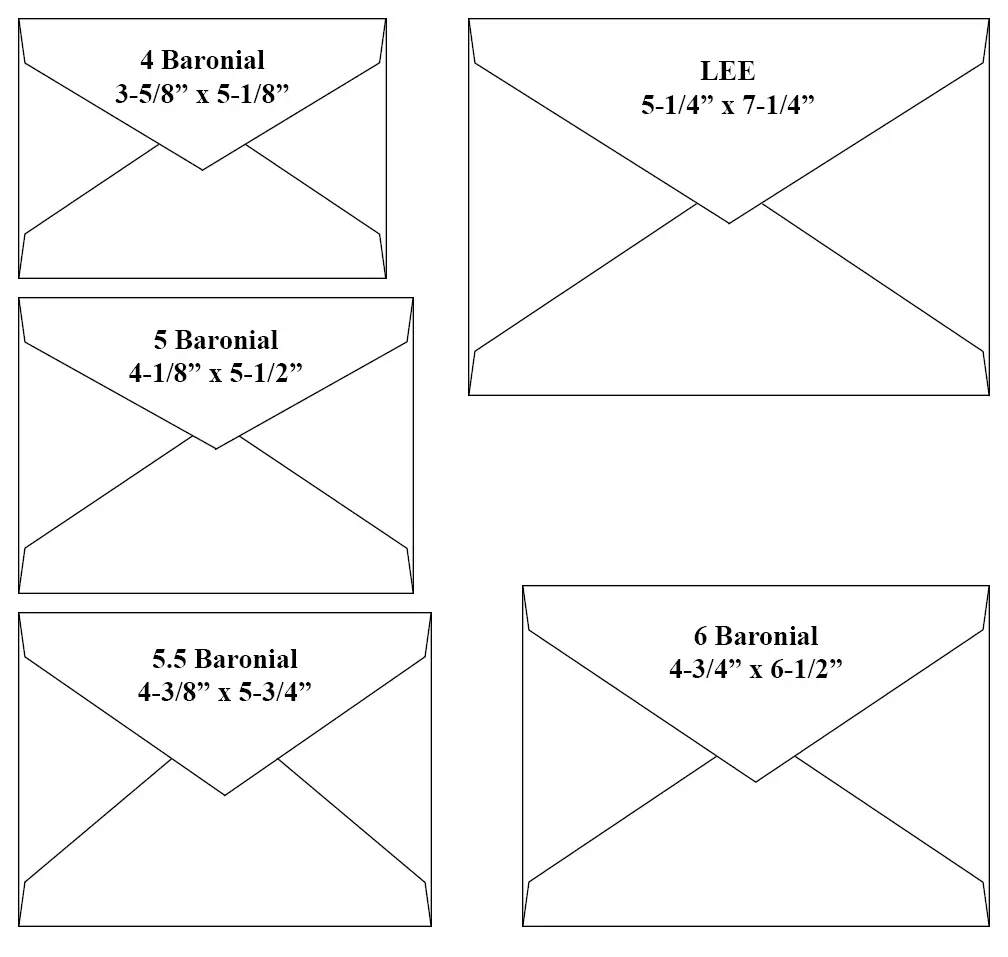This article is all about US Envelope Sizes & every single piece of information about them.
Table of Contents
North American & US Envelope Sizes, Dimensions
The standardization of envelope sizes in the United States is much better than the ISO 216 standard.
Though it has a particular standard for each kind of envelope, US Envelope Size excels in various ways. The three main types of envelope sizes are as follows:
Commercial Envelope Sizes
As the name suggests, the Commercial Envelope Sizes widely used in commercial sectors such as businesses or offices. These types of envelopes are ideal for automatic filling and franking. The size and shape of the commercial envelope are considered to be long and thin, and the aspect ratio of the shorter side to the longer side lies between 1:1.6 and 1:2.2. So, here is a table with different types of sizes available for commercial envelopes and the most popular commercial envelope known so far is the Tairy Greene. This is due to its ability to hold letter size paper folders into three or legal size paper folder into four.
[table id=58 /]Announcement Envelope Sizes
As the name suggests, announcement envelopes are used in personal life scenarios such as photographs, invitation letters, greeting cards, and many more. These envelopes are also A-style envelopes. The aspect ratio of the shorter side of the envelope to the longer side ranges from 1:1.3 to 1:1.6, making it closer to square than the long and thin commercial envelope. The most famous announcement envelope sizes known so far are Lady Grey and Diplomat.
[table id=59 /]Catalog Envelope Sizes
Besides the other two sizes, people consider catalog envelopes the most durable. Also, Catalog envelopes are specially designed for heavier content such as brochures, catalogs, etc. These envelopes are very similar to announcement envelopes, and they have an aspect ratio that ranges between 1:1.3 and 1:1.5
[table id=60 /]FAQ’s
Is it necessary to stamp all envelopes?
Stamps should be there for both domestic and international correspondence. The number of stamps required will vary according to the weight, size, and destination (domestic or international). Post offices require this proof of postage to scan and orient the letter.
What is the purpose of envelopes?
Sending letters in envelopes is a professional technique of interacting with one another that many businesses take extremely seriously. If you send a lousy envelope, your recipient may assume you're clueless about formal communication and refuse to open it.
Is it necessary to include a last name on envelopes?
In the center of the envelope, write the recipient's family name and address. Last names should always be there on envelope addresses. In addresses, you do not use an apostrophe with last names.
Can you place stamps on an envelope anywhere?
Postage stamps and postage-paid impressions must be there in the upper-right corner of the address side of the mail. When using plastic wrap, the postage meter stamp, postage validation imprinter (PVI) label or permission can be applied directly to the mailpiece.
What information is critical to include on an envelope?
Including the sender's entire name and address, the recipient's full name and address, and any postage is critical when sending an envelope. The sender's name and address are usually in the envelope's upper left corner. The address and name of the receiver should be in the lower center of the envelope.
What characteristics distinguish an envelope?
A flat, flexible container composed of paper or similar material with a single opening and a flap that can be shut over the opening is an envelope. Typically, the envelope is put on seal by soaking a section of the flap.
What exactly is a legal envelope?
Legal-sized envelopes are typically used for papers measuring 8 12 inches by 14 inches. Most legal envelopes are 9 12 inches by 15 inches in size to accommodate legal documents.
What is the distinction between a legal and a letter-size envelope?
The simplest way to describe the difference between legal and letter-sized paper is that legal paper is 8.5 x 14 inches, and letter paper is 8.5 x 11.






